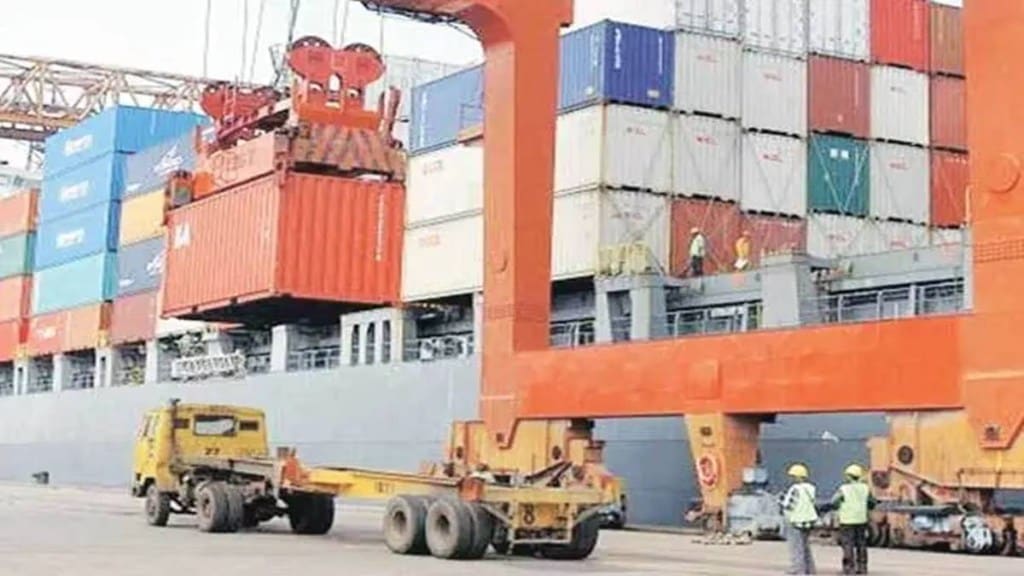– By Nitin Bakshi
Natural disasters, geopolitical unrest, trade battles, and cyberattacks are major disruptions that have substantially affected the world of supply chain ecosystem. According to a recent survey of supply chiefs, 30% say they have converted from a global to a regional supply chain model because they believe it is unsustainable to serve the entire world from far-off global operations. The significance of regionalization in supply chain management has moved to the front of business considerations in a more interconnected and uncertain world.
India has recently achieved outstanding progress in upgrading its supply chain management capabilities, supporting its position as a desirable and stable location for manufacturing and trade. The nation has adopted the Atmanirbhar Bharat vision to meet its economic development goals. The encouragement of regional manufacturing through programmes like the Make in India campaign, which opened the door for the introduction of several government-led programmes and initiatives, has been essential to achieving this goal. Initiatives including the Supply Chain Resilience Initiative (SCRI), Scheme for Promotion of Manufacturing of Electronic Components and Semiconductors (SPECS), and Modified Electronics Manufacturing Clusters Scheme (EMC 2.0), have concerted a push to become self-sufficient and improved India’s ability to efficiently manage supply chains and has placed it in an advantageous spot on the international arena for promoting economic growth and sustainability. These programmes have been successfully enhancing the nation’s infrastructure, making it simpler for businesses to establish themselves in India and run their operations there, and encouraging regional cooperation on supply chain resilience. Because of the tremendous advantages of regional initiatives, businesses are rethinking their supply chain strategy and remodeling it towards regionalization.
Proactive Strategies for building strong Supply Chains
Businesses can implement a number of crucial initiatives to improve their supply chain resilience. First of all, expanding their supplier network shall protect them against disruptions in essential materials or components by reducing reliance on a single source. Second, maintaining solid ties with regional vendors can guarantee a consistent supply of goods and permits quick answers to fluctuations in demand. Third, spending money on technology could increase the efficiency and visibility of the supply chain, making it possible to identify problems earlier and fix them. Last but not least, creating strong backup plans can aid to a speedy restart of activities and reducing the effects of disruptions. These proactive steps could give businesses the tools they need to face issues and maintain a smooth supply chain.
Regional Supply Chains Slash Carbon Footprint by 35%
It has been reported that due to decreased traffic and increased energy efficiency, businesses who have adopted a regional strategy to their supply chains have lowered their carbon footprint by up to 35%. This is due to the fact that regional supply chains are more compact and effective, which lowers the energy and emissions needed to move commodities. Long and complicated global supply chains frequently cause a large increase in carbon emissions, wasteful waste, and environmental impact. There are many approaches to integrate sustainability and compliance into regional supply chains. For instance, businesses can employ sustainable products, local suppliers, and effective resource utilization. They can also work with other companies, give education and training, monitor and assess their development, and follow environmental rules.
Catalysts for Local Economic Growth and Resilience
Multiple approaches exist for regional supply networks to benefit the local economy. They can boost and encourage innovation, draw in investment, and create jobs. They also help businesses operate in a more stable and predictable environment by connecting various enterprises and organizations. Thus, this can encourage investment and innovations that help the local economy grow substantially. Additionally, incidents like natural disasters or political unrest are less likely to interrupt regional supply systems. They become more shock and disturbance resistant as a result, this helps to safeguard the local economy. The electronics industry in Southeast Asia where millions of people in the area are employed by the sector that has also attracted billions of dollars in investment is a classic illustration for a regional supply system boosting the local economy. South Asian businesses desire that their suppliers be situated close to their facilities to facilitate quality control and lessen supply chain concerns relating to transportation.
Integrating Technology for Efficiency & Transparency
Technology integration can be used to improve regional supply chains by sharing information and data between organizations, collecting information from sensors and other devices, analyzing data to make predictions, and offering a secure and visible record of transactions. Cloud computing, IoT, AI, and block chain initiatives in the supply chain can help to improve transparency, traceability, collaboration, decision-making, and trust. There are several ways that technology can assist in slicing down expenses, including through automating processes, lowering mistake rates, and increasing productivity. For instance, by monitoring how materials and products are used, IoT sensors might assist to reduce waste.
It is undeniable that regionalization will have a major impact on how supply chain management develops in the future. Resilience, responsiveness, sustainability, and compliance are requirements for the linked and unpredictably changing environment in which we live. 97% of respondents, according to a survey conducted by Mckinsey and Company, claim to have used a combination of inventory increases, dual sourcing, and regionalization to strengthen resilience. Embracing regionalization is more than simply a tactic; it is an influential force that enables us to overcome obstacles and survive in a world that is constantly changing. Taking advantage of this chance to change supply chain dynamics can create beneficial effects beyond geographies and industries.
(Nitin Bakshi is the Vice President Global Supply Chain- India, MEA, SAM & Pacific at Schneider Electric.)
(Disclaimer: Views expressed are personal and do not reflect the official position or policy of Financial Express Online. Reproducing this content without permission is prohibited.)

